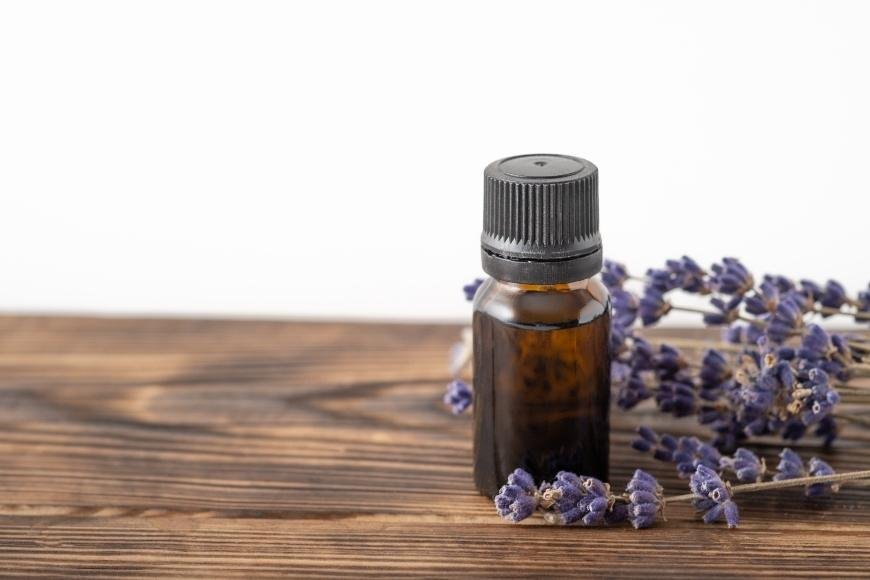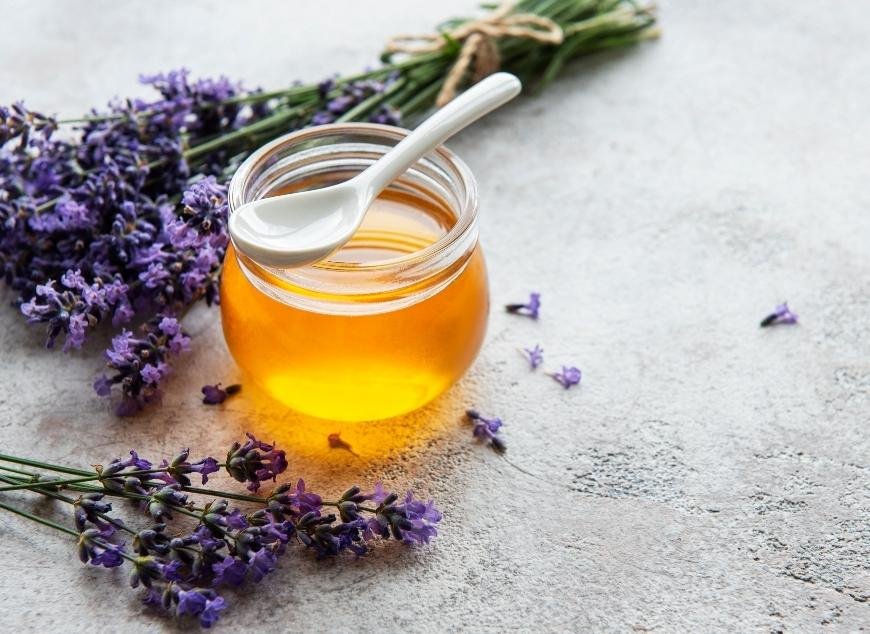How to Extract Lavender
Learn how to extract lavender with our beginner's guide, covering the extraction process, benefits, and safety precautions for homemade essential oil.

If you're looking to extract lavender oil from fresh flowers, this blog post will show you how. Lavender is a versatile plant known for its beautiful scent and medicinal properties, making it an excellent addition to your collection of essential oils. For this blog post, we will provide a comprehensive guide on extracting lavender oil from fresh flowers at home, outlining the materials and preparation needed for the process as well as methods of storing your extracted oil.
We'll discuss what materials are needed for extraction and how to prepare the lavender plant before diving into the extraction process itself. Additionally, we will cover proper storage methods for preserving your freshly extracted lavender oil as well as its various benefits and uses. Lastly, we'll touch upon some safety precautions when making lavender extract so that you can confidently create your own high-quality product.
Table of Contents:
- What is Lavender Extract?
- The Power of Aromatherapy
- Natural Skincare Benefits
- What You Need to Make Lavender Extract
- Extraction Process
- Storing Your Extract
- Safety Precautions When Making Lavender Extract
- Frequently Asked Questions How to Extract Lavender
- Conclusion
What is Lavender Extract?
Lavender extract, derived from the beautiful and fragrant lavender plant (Lavandula angustifolia), has been used for centuries due to its calming properties and delightful scent. The extraction process of lavender flowers produces a concentrated essential oil liquid, which can be used for aromatherapy, skincare products or culinary purposes.
In this guide, we will delve into why you would want to make your own lavender extract at home and how it can enhance your overall well-being. So let's dive right in.
The Power of Aromatherapy
Aromatherapy harnesses the power of natural plant extracts like lavender oil to promote relaxation and reduce stress levels. When diffused or applied topically (diluted with a carrier oil), lavender extract has been shown to help alleviate anxiety, depression, insomnia, and restlessness by stimulating certain receptors within our brain responsible for regulating mood.
Natural Skincare Benefits
Lavender extract is also widely recognized for its skin-soothing properties. It contains antioxidants that protect against environmental damage while promoting healing processes within our skin cells - making it an excellent addition to homemade lotions or salves aimed at treating acne-prone skin types or soothing sunburns.
Culinary Uses
- Sweet treats: Add a few drops of food-grade lavender extract into cookie doughs or cake batters for an elegant floral twist on classic desserts.
- Beverages: Mix lavender extract into lemonades, teas, or cocktails for a refreshing and calming beverage experience.
- Savory dishes: Incorporate lavender extract into sauces or marinades to enhance the flavors of meats and vegetables with its unique herbaceous notes.
With so many potential applications, it's no wonder that making your own lavender extract is an enticing prospect. In the following sections, we'll guide you through everything you need to know about creating this versatile elixir at home - from gathering materials to proper storage techniques.
What You Need to Make Lavender Extract

Gathering the necessary materials and equipment is essential for a successful lavender extract creation process. This will ensure a smooth and efficient extraction process. Here is a list of items you'll need:
- Fresh or dried lavender flowers: It's crucial to use high-quality, organic lavender for optimal results. For the best results, acquire fresh lavender blossoms either from your own garden or an authorized seller.
- A glass jar with lid: Choose a clean, sterilized jar that has an air-tight seal. A jar, such as a mason one, that is able to be sealed tightly works well for this purpose.
- Vodka or another high-proof alcohol: Using vodka as the solvent helps in extracting essential oils from the plant material while also acting as a preservative for your extract. Ensure that it contains at least 40% alcohol content (80 proof). As an alternative to alcohol, vegetable glycerin of food-grade quality can be utilized.
- Cheesecloth: To strain out plant material after extraction.
- Funnel: For transferring liquid between containers without spillage.
- Gloves: To protect hands during handling and straining processes.
In addition to these basic supplies, having some optional tools can enhance the extraction process and improve your final product:
- Mortar and pestle: Grinding the lavender flowers before extraction helps release their essential oils, resulting in a more potent extract.
- Amber glass bottles: To store your finished extract. Amber-colored bottles protect the contents from light exposure, which can degrade its quality over time.
Extraction Process
The process of extracting lavender oil is relatively simple and can be done at home with a few basic materials. To create your own lavender extract, we will provide a step-by-step guide.
Step 1: Choose Your Extraction Method
There are several methods for extracting essential oils from plants, but the most common and effective method for lavender is steam distillation. This involves using heat and water vapor to separate the essential oil from the plant material. Another popular method is cold pressing, which uses mechanical pressure to release the oils without applying heat.
Step 2: Set Up Your Distillation Equipment
If you've chosen steam distillation as your extraction method, you'll need some specialized equipment such as a glass distillation kit. Alternatively, if you prefer a more DIY approach, it's possible to build your own makeshift setup using household items like a large pot with lid, glass bowl or jar inside (to collect oil), and ice on top of the lid (to help condense steam).
Step 3: Prepare Lavender Material
- Gather fresh or dried lavender flowers - ideally organic and pesticide-free.
- Cut off any long stems that might not fit in your distiller or pot.
- Weigh out approximately 100 grams of prepared lavender material for every liter of water used in the extraction process.
- Add both water and prepared lavender into either your professional-grade still or makeshift setup described earlier.
Step 4: Begin the Distillation Process
Heat your distiller or pot to a temperature of around 100°C (212°F). This will create steam, which will pass through the lavender material and extract its essential oils. The steam containing the oil then rises and is cooled by either a condenser in professional equipment or ice on top of your makeshift setup. Once cooled, it turns back into liquid form - this mixture of water and essential oil is called hydrosol.
Step 5: Separate Oil from Hydrosol
The final step in the extraction process involves separating the lavender essential oil from the hydrosol. To do this, simply let your collected liquid sit undisturbed for several hours or overnight. Since oil is lighter than water, it will naturally rise to the surface where you can easily collect it using a dropper or pipette.
Congratulations. You've successfully extracted lavender oil at home using steam distillation. Now that you have your homemade extract ready to use, continue reading for tips on storing and preserving its potency.
Storing Your Extract

Now that you've successfully made your lavender extract, it's essential to store it correctly to maintain its potency and freshness. Proper storage also ensures that the oil remains safe for use in various applications. In this section, we'll discuss how to store your extracted lavender oil effectively.
Selecting the Right Container
The first step in storing your lavender extract is choosing an appropriate container. A dark glass bottle, such as amber or cobalt blue, is ideal because it protects the oil from light exposure which can cause degradation over time. Additionally, using a bottle with a tight-fitting cap or dropper will help prevent air exposure and contamination.
Labeling Your Lavender Extract
To keep track of when you made your extract and ensure proper usage, always label your bottles clearly with relevant information like:
- Date of extraction
- Type of solvent used (if applicable)
- Suggested expiration date (typically one year after extraction)
Maintaining Optimal Storage Conditions
Lavender extracts should be stored in cool, dark places away from direct sunlight and heat sources like radiators or stoves. This helps preserve their quality by preventing oxidation caused by high temperatures and light exposure. If possible, consider storing them in a dedicated cupboard or drawer designated for essential oils.
Tips for Long-Term Storage:
- Avoid exposing the extracts to extreme temperature fluctuations - this may reduce their shelf life.
- Ensure the cap or dropper is always tightly closed to minimize air exposure and evaporation.
- If you notice any changes in color, consistency, or smell of your lavender extract, it may be time to discard it and make a fresh batch.
By following these storage guidelines, you can ensure that your homemade lavender extract remains potent and effective for an extended period. Properly stored extracts are not only more enjoyable to use but also provide maximum benefits when used in various applications.
Safety Precautions When Making Lavender Extract
While making lavender extract is an enjoyable and rewarding process, it's essential to take some safety precautions to ensure a successful and hazard-free experience. In this section, we'll discuss the necessary steps you should follow to stay safe during the extraction process.
Use Proper Equipment
When extracting lavender oil, using appropriate equipment is crucial for your safety. Ensure that you're using materials such as high-quality glass containers, stainless steel pots, and other heat-resistant items specifically designed for oil extraction to avoid contamination. Avoid using plastic or low-quality metal utensils as they can leach harmful chemicals into your extract or react with high temperatures.
Maintain a Well-Ventilated Workspace
Lavender oil extraction involves heating the plant material which may release strong fumes. It's important to work in a well-ventilated area like an open kitchen or outdoors when possible. This will help prevent any respiratory issues from inhaling concentrated vapors while also reducing fire hazards associated with poor ventilation.
Avoid Direct Contact With Concentrated Oils
- Gloves: Wear gloves when handling concentrated oils as they can cause skin irritation if not diluted properly before use.
- Eyewear: Protective eyewear is recommended during the extraction process to avoid accidental splashes of hot liquid that could damage your eyesight.
- Clothing: Wear long sleeves and pants made of natural fibers (such as cotton) that cover most of your skin surface area while working with essential oils; this will minimize potential contact risks.
Be Mindful of Fire Hazards
As you'll be working with heat during the extraction process, it's essential to take precautions against fire hazards. Keep flammable materials away from your workspace and ensure that any open flames are attended at all times. If using an electric stove or heating element, make sure it is in good working condition and follow proper cooking safety guidelines.
Frequently Asked Questions How to Extract Lavender
What is the extraction method for lavender?
The most common extraction method for lavender is steam distillation, which involves passing steam through the plant material to collect essential oils. This process preserves the therapeutic properties and aroma of the oil while separating it from water and other impurities. Steam distillation has been proven effective in extracting high-quality lavender essential oil.
How do you extract fragrance from lavender?
To extract fragrance from lavender, you can use an infusion or maceration technique. In this process, dried or fresh lavender flowers are soaked in a carrier oil like almond or jojoba oil for several weeks. The mixture should be shaken daily to ensure proper absorption of scent into the carrier oil. Afterward, strain out the plant material using a cheesecloth to obtain your fragrant lavender-infused oil.
How do you extract lavender essential oils?
Extracting lavender essential oils typically requires steam distillation equipment such as a glass still or copper alembic apparatus. Freshly harvested and partially dried plant materials are placed inside a chamber with boiling water beneath it; steam passes through these materials, capturing volatile compounds including essential oils before condensing back into liquid form containing both water and extracted oils that can then be separated easily by decantation or specialized separators called essenciers.
Conclusion
Creating your own lavender extract is a great way to maximize the benefits of this fragrant plant, allowing you to adjust its potency and have it on hand for multiple purposes. Not only does it make for an easy-to-use and store product, but you can also customize its strength depending on how much oil you use in relation to the amount of water used during extraction. With proper safety precautions taken into consideration, making your own lavender extract at home can be rewarding and enjoyable experience that yields results with a range of potential uses from aromatherapy to culinary applications.






































































































































